With only two weeks until our opening concert of this term, last night’s rehearsal was all about developing an ensemble sound. As I said to the Choir, we need to start sounding less like eighteen singers standing around the edge of a wall, each putting our own individual sound forward, and more like a unified singing entity.
The key to unlocking this is, and always has been about, listening; listening to one another, to other voice-parts, to the harmonic landscape of a work. The voices need to be aware not only of others singing the same part (standing in mixed-formation really makes this essential), but also of how their line relates to other lines around them – moving in similar motion, working against, responding to or picking up from a line already in progress, and understanding how their line relates to everything else.
 The moment of epiphany came during Whitacre’s ravishing Lux Aurumque; flying now without piano support, we launched into those colourful opening chords; it was fine, but wasn’t really working properly; the notes were in place, but the colours weren’t coming. ‘Listen,’ I said – ‘now really listen to one another – watch someone who comes in when you do – listen to another part and work your dissonance against theirs. Be aware of everyone around you, and commit to the sound.’
The moment of epiphany came during Whitacre’s ravishing Lux Aurumque; flying now without piano support, we launched into those colourful opening chords; it was fine, but wasn’t really working properly; the notes were in place, but the colours weren’t coming. ‘Listen,’ I said – ‘now really listen to one another – watch someone who comes in when you do – listen to another part and work your dissonance against theirs. Be aware of everyone around you, and commit to the sound.’
Commitment is the other crucial factor, particularly in those contemporary works we’re performing that rely on a firm embracing of a tangential tonal language, rich in dissonance, often without resolution. Those added-notes and chromatic relationships really need to beat against one another – you have to really stand your ground and commit to your note, and if everyone else does the same, the colours can really start to scintillate.
So we stopped, and began again. And the effect was immediate. There was a fullness to the sound, and the harmonic landscape was transformed; suddenly, those cluster-chords were working. As we sang on, you could see some real astonishment lighting up the faces of those who were ‘getting it’ – this is what it’s meant to sound like.
And the knock-on effect was such that the same core commitment to the sound emerged in the desolate yearnings of the Brahms songs as well. You need to learn your notes and watch the conductor, it’s true; but being prepared to commit fully to your line, to listen to others and understand how what you’re singing relates to what they are doing, means the music can really start to lift off the page and come to life.
We’re getting there…

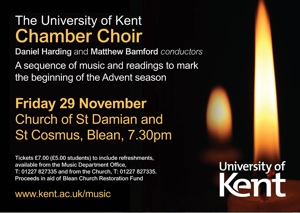
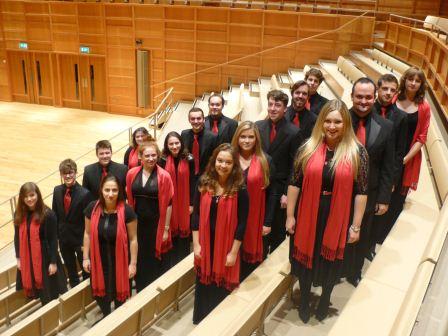
 So far, we’ve looked at Columba aspexit, a Kyrie setting, and today we began O Virtus Sapientiae. The Kyrie in particular has started to find its feet, and rehearsing it free of the piano allowed us to launch the various lines into the upper reaches of the concert-hall, and begin to explore the pacing of the lines, and the pauses in between them.
So far, we’ve looked at Columba aspexit, a Kyrie setting, and today we began O Virtus Sapientiae. The Kyrie in particular has started to find its feet, and rehearsing it free of the piano allowed us to launch the various lines into the upper reaches of the concert-hall, and begin to explore the pacing of the lines, and the pauses in between them.
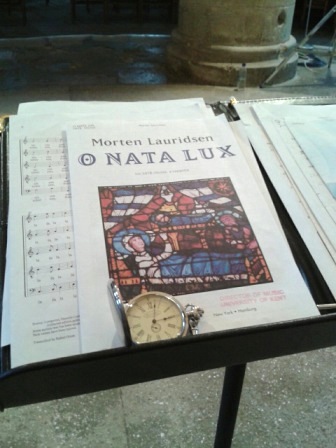
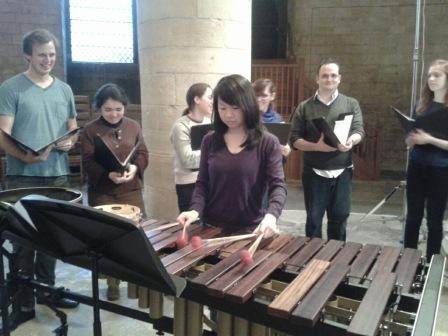

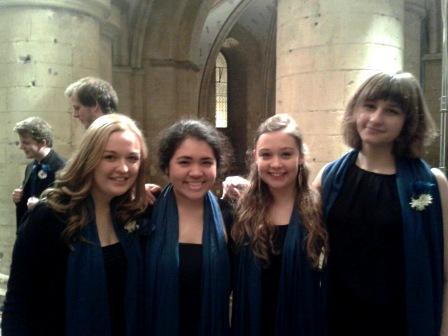
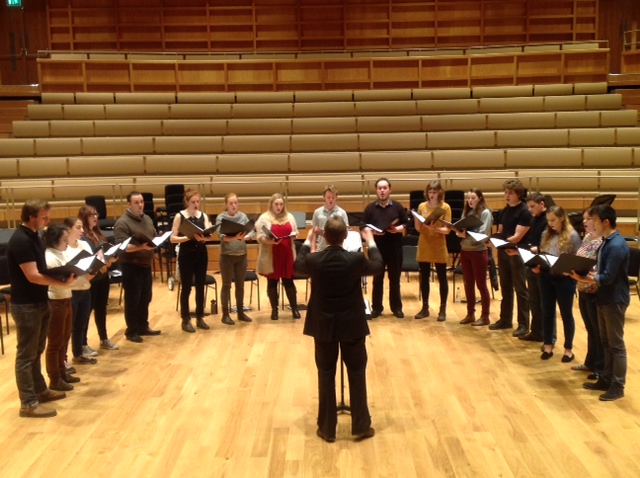
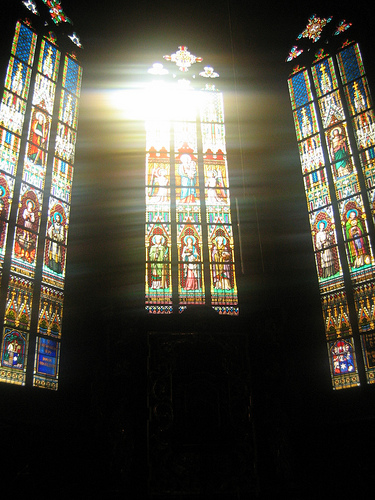

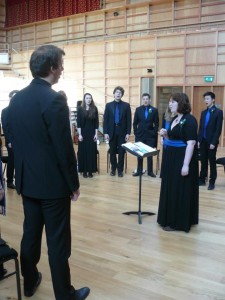

 One of the aspects of singing with an ensemble that less experienced performers can sometimes forget is actually being responsible for making your individual contribution to the ensemble.
One of the aspects of singing with an ensemble that less experienced performers can sometimes forget is actually being responsible for making your individual contribution to the ensemble.